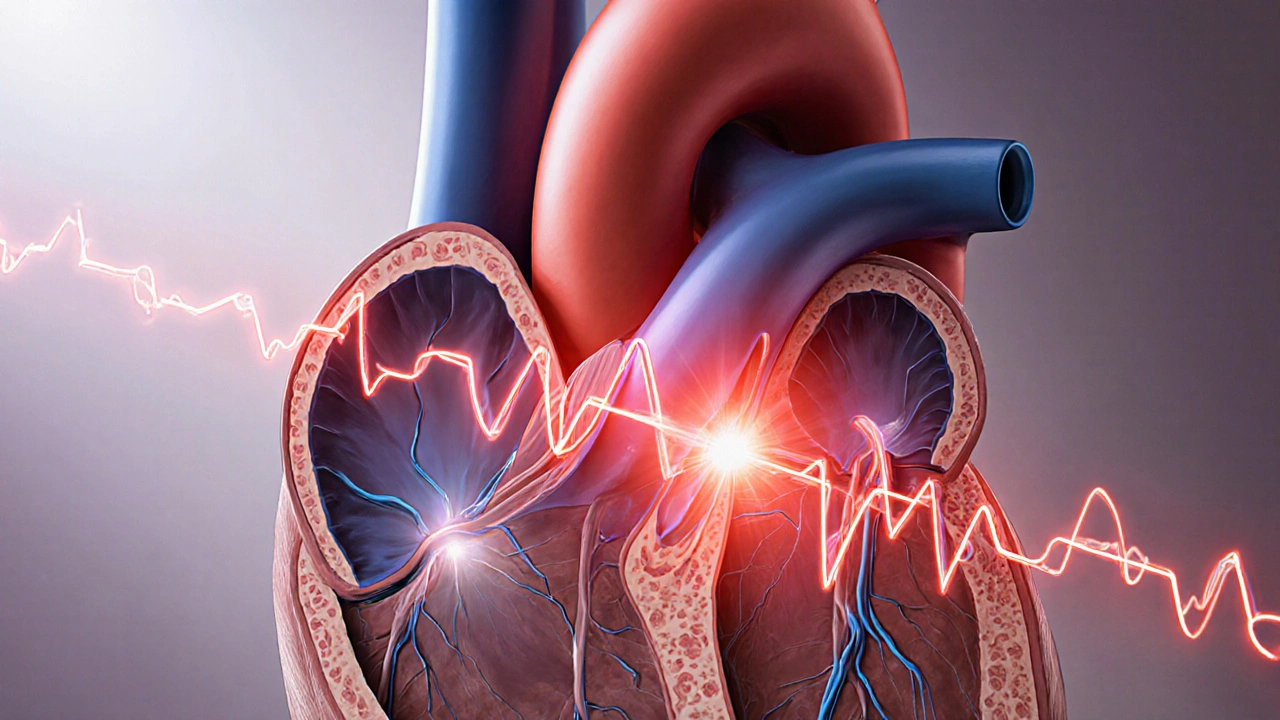SVT Types – A Clear Guide to Supraventricular Tachycardia Variants
When dealing with SVT types, the different forms of supraventricular tachycardia that cause rapid heartbeats above the ventricles. Also known as supraventricular tachycardia variants, they are a subset of arrhythmia, any irregular heartbeat pattern and often require assessment by electrophysiology, the study of the heart’s electrical system used to pinpoint abnormal circuits. Effective treatment, medication or procedures that restore normal rhythm is essential for symptom relief and preventing complications. In short, understanding each SVT type helps you choose the right diagnostic path and therapy.
Key SVN Subtypes You’ll Encounter
SVT types encompass several distinct subcategories. The most common is AVNRT (atrioventricular nodal re‑entrant tachycardia), where a loop inside the AV node triggers fast beats. AVRT (atrioventricular re‑entrant tachycardia) involves an extra pathway, often seen in Wolff‑Parkinson‑White syndrome. Atrial tachycardia originates from abnormal firing in the atria themselves, while MAT (multifocal atrial tachycardia) features multiple wandering pacemakers, usually linked to lung disease. Each variant shares the core idea of a rapid rhythm above the ventricles, yet the mechanisms differ enough to affect how doctors manage them.
Diagnosing these SVT types requires a step‑by‑step approach. A quick look at your pulse or a handheld ECG can reveal a rate over 100 bpm and a regular rhythm. If the pattern isn’t clear, a 12‑lead ECG provides the electrical fingerprint needed to differentiate AVNRT from AVRT or atrial tachycardia. In ambiguous cases, an electrophysiology study—where catheters map the heart’s circuitry—offers definitive answers. This diagnostic chain shows that accurate identification directly influences the success of any chosen therapy.
Once the specific SVT type is known, treatment options can be matched. Simple vagal maneuvers—like bearing down or a cold‑water splash—can break many episodes without medication. For frequent episodes, beta‑blockers or calcium‑channel blockers are first‑line drugs that slow the heart’s electrical signals. When medicines aren’t enough, catheter ablation targets and eliminates the faulty pathway, offering a long‑term cure for many patients. The choice of therapy influences not only how quickly the episode stops but also long‑term quality of life, making personalized care crucial.
Beyond acute management, lifestyle and monitoring play a big role in living with SVT types. Regular exercise, stress reduction, and avoiding caffeine or alcohol spikes can lower episode frequency. Keeping a symptom diary helps your doctor see patterns and adjust treatment. With the right mix of education, monitoring, and therapy, most people with SVT can stay active and symptom‑free. Below you’ll find articles that dive deeper into each subtype, diagnostic tricks, and treatment strategies, giving you a toolbox to handle any SVT challenge that comes your way.

Supraventricular Tachycardia Types Explained: AVNRT, AVRT, Atrial Tachycardia & More
- by Colin Edward Egan
- on 14 Oct 2025
Learn the key SVT types-AVNRT, AVRT, atrial tachycardia, and more-how they differ, how they're diagnosed, and the best treatment options.
